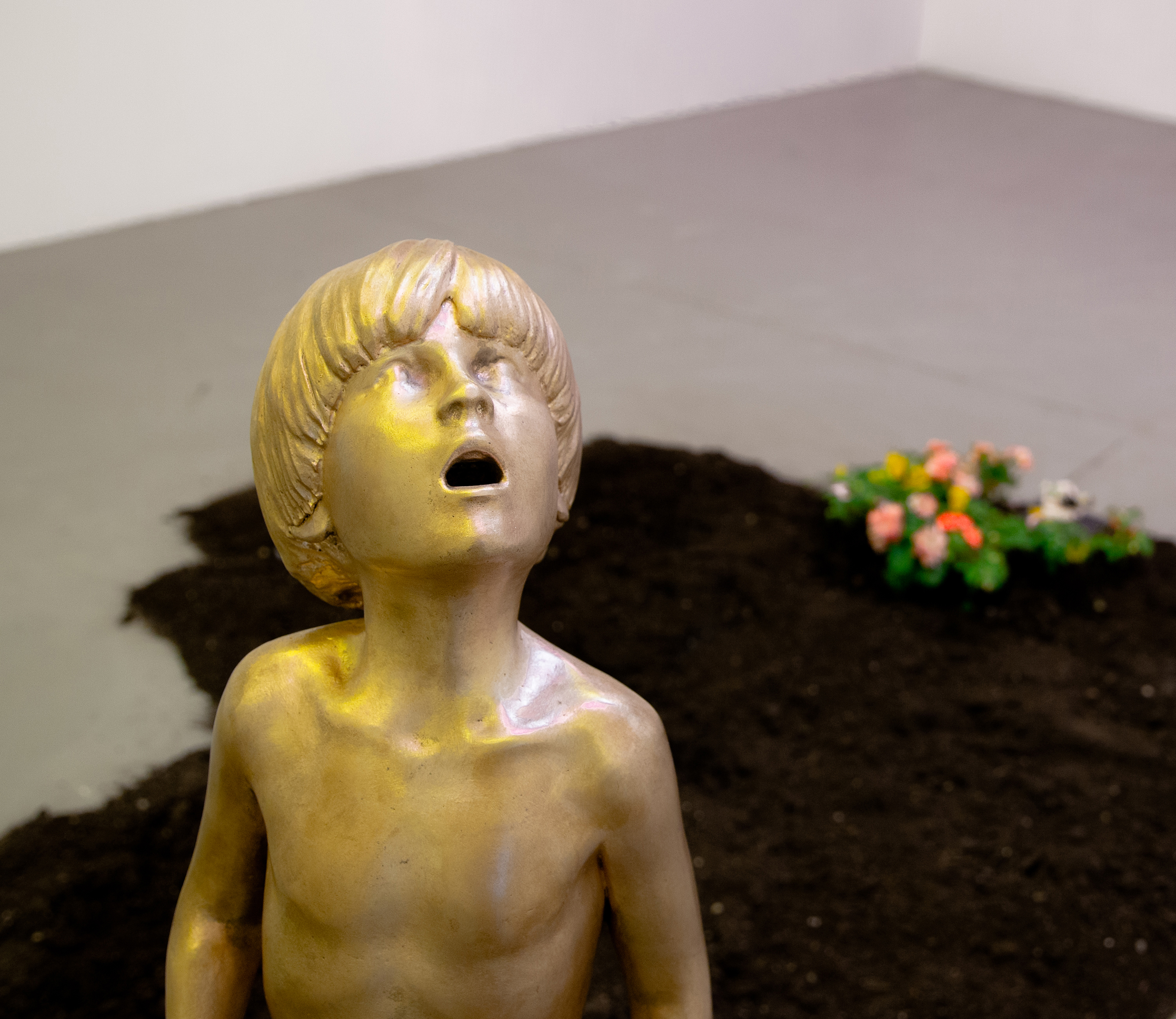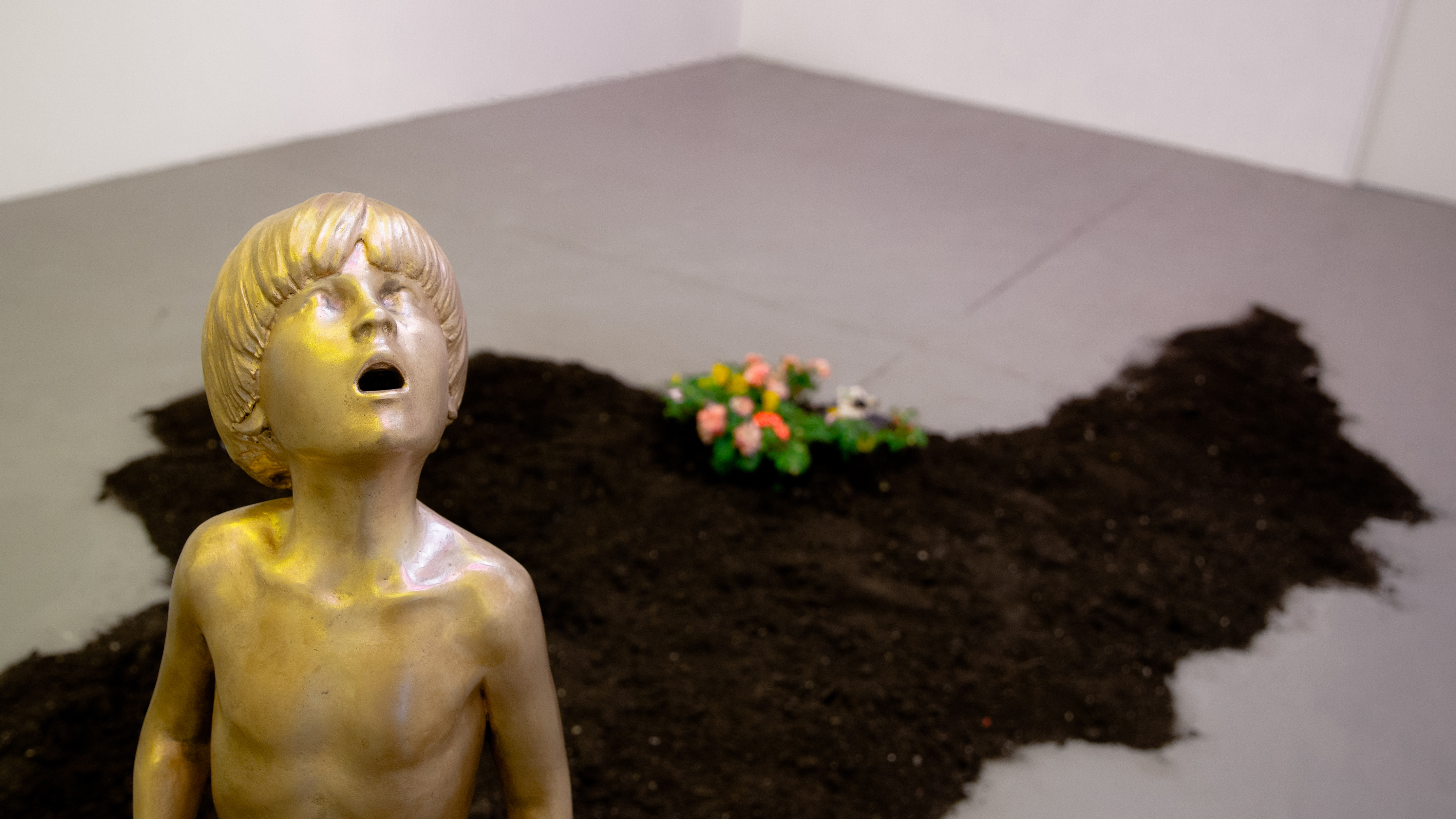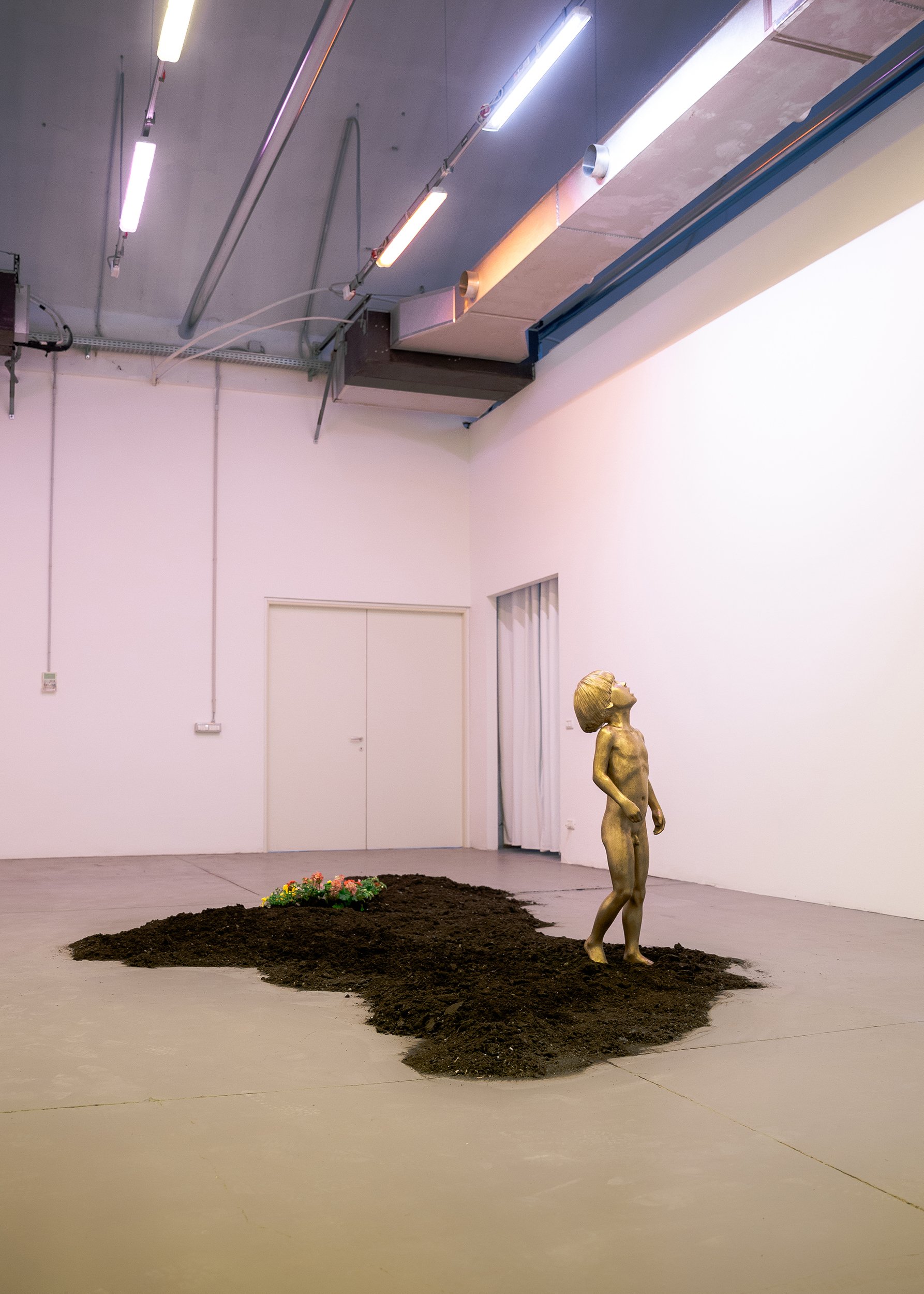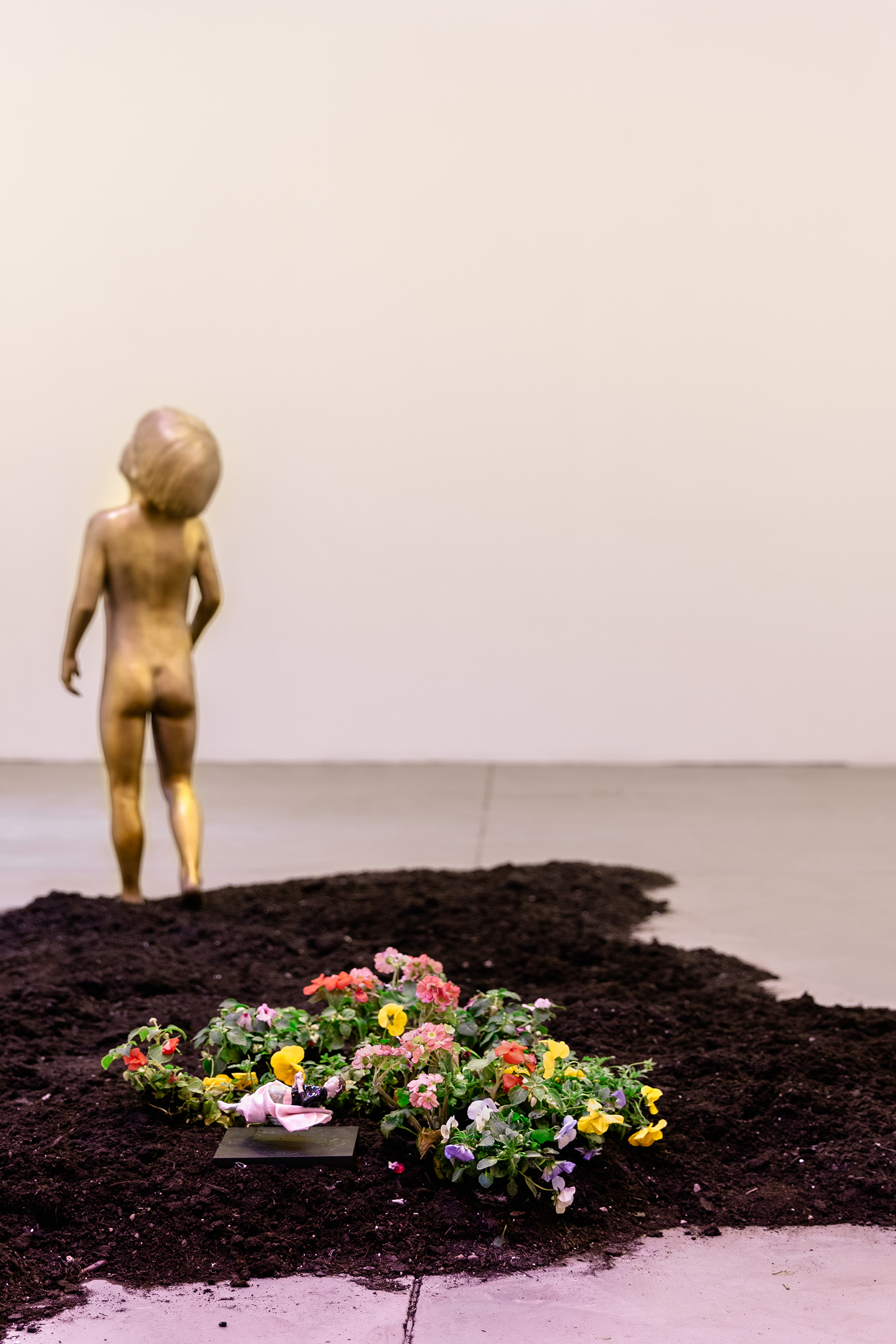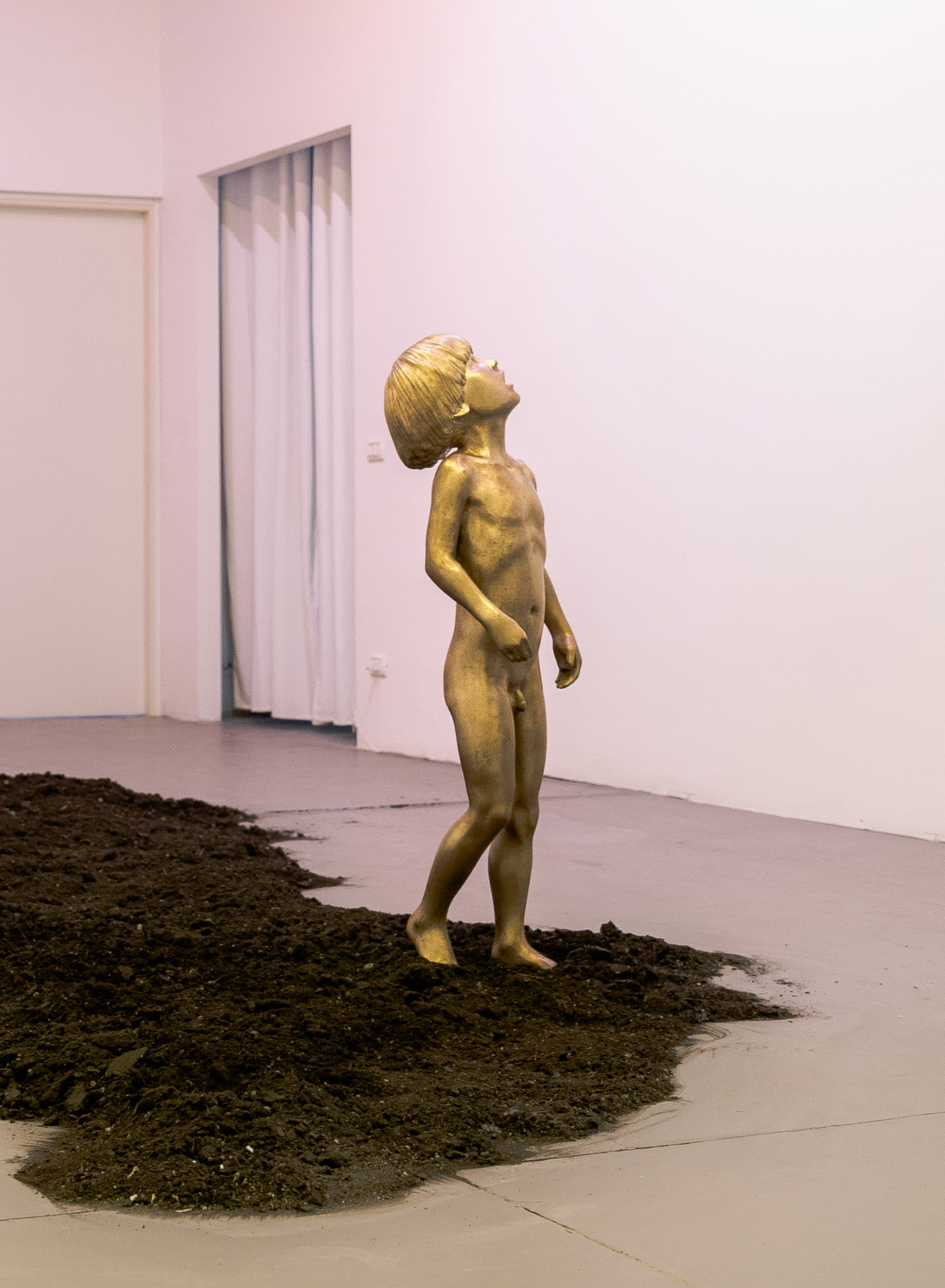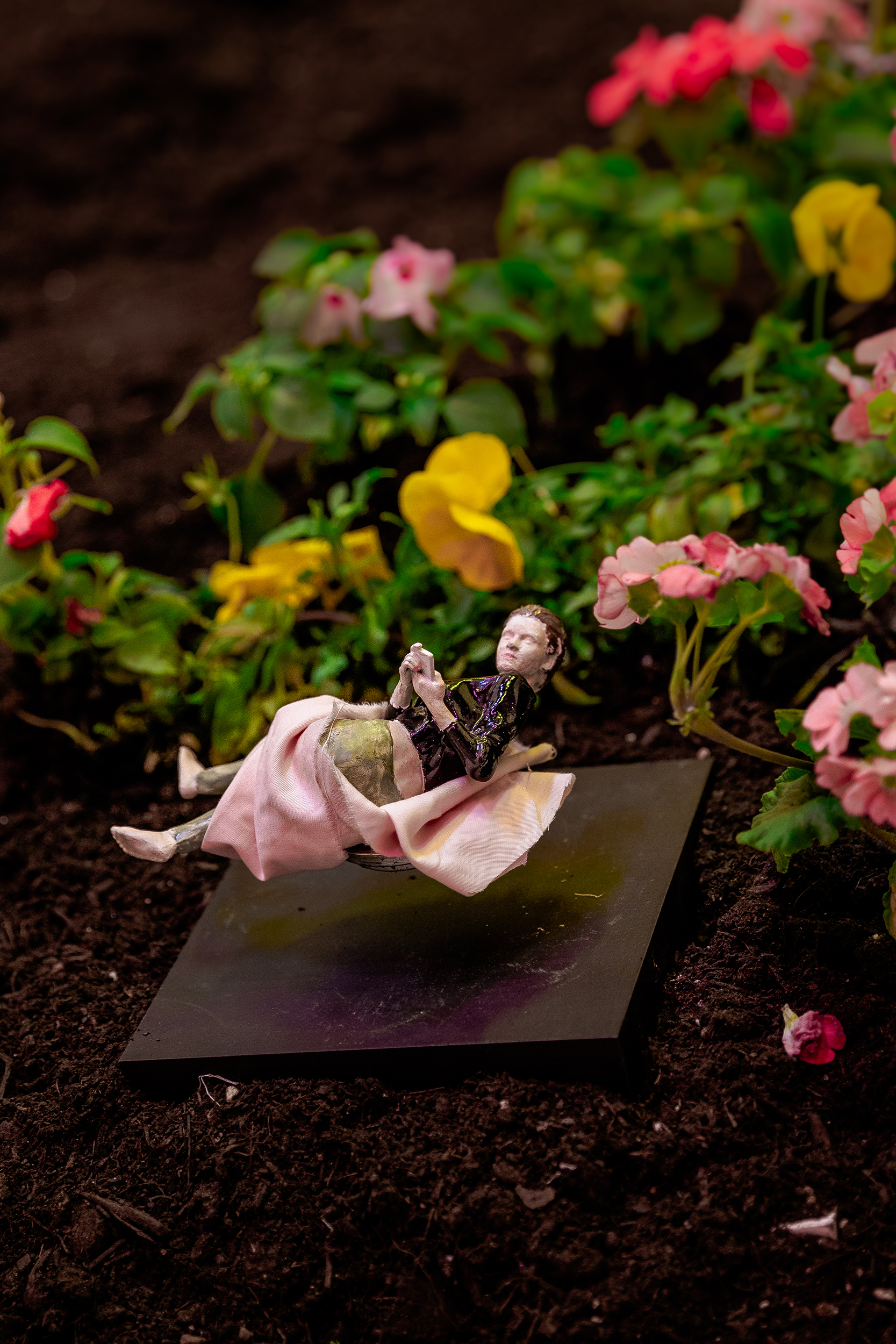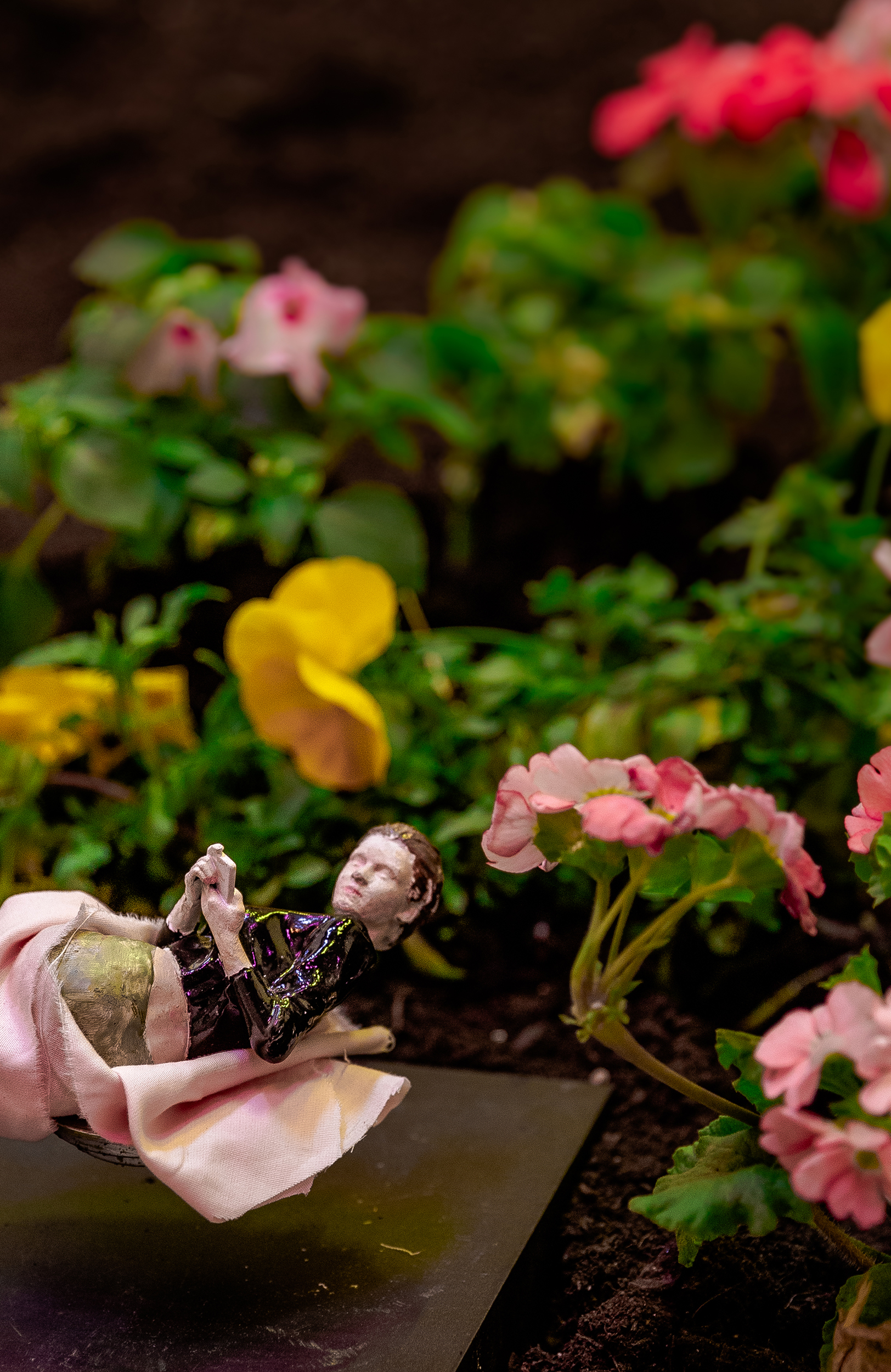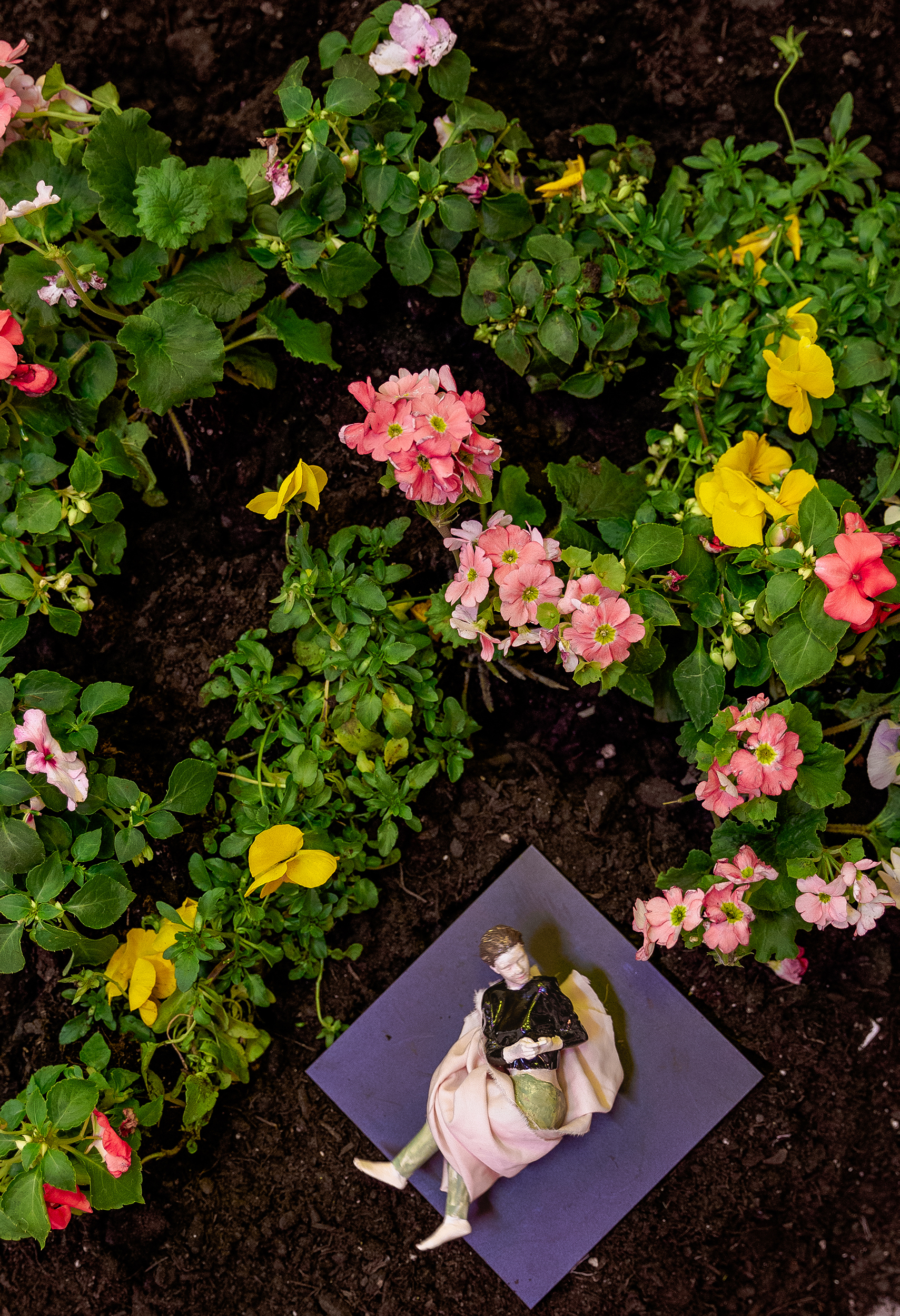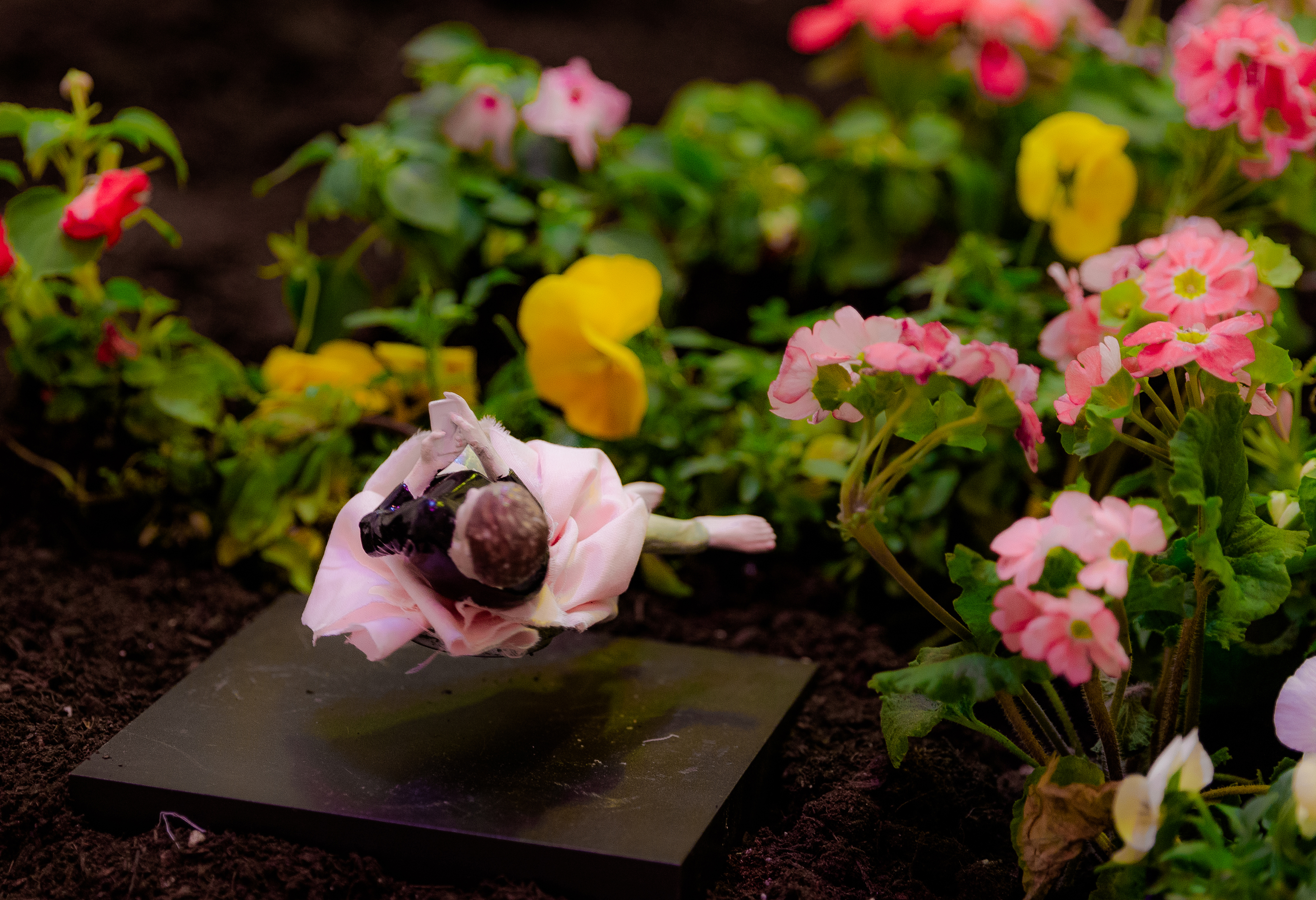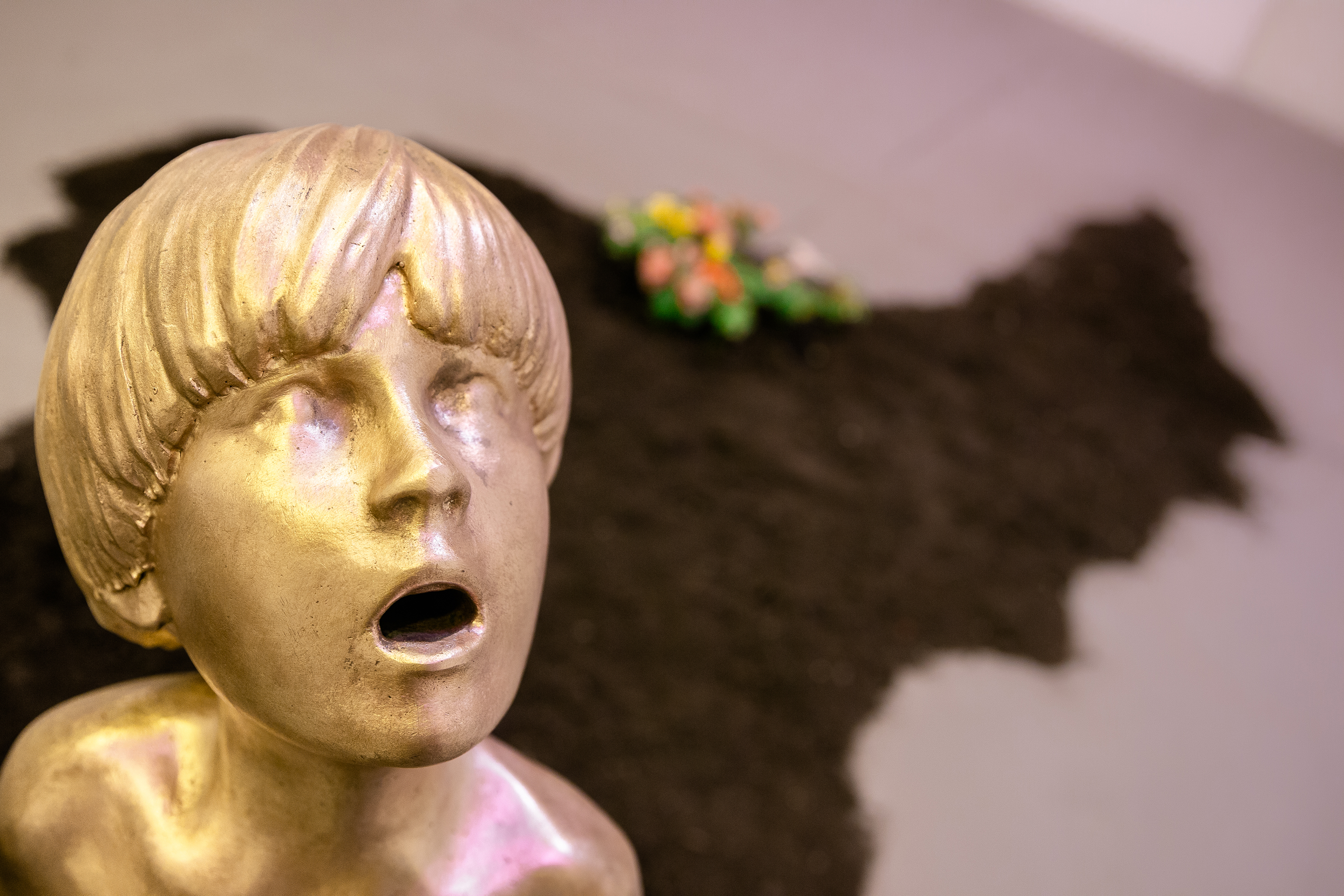3
YVES SCHERER
BOY
3.04 – 31.05.19
◊
For the occasion of the solo presentation of Boy, Swiss and New York based artist YVES SCHERER (b. 1987) in conversation with Samuel Leuenberger
For the occasion of the solo presentation of Boy, Swiss and New York based artist YVES SCHERER (b. 1987) in conversation with Samuel Leuenberger
SL: You were invited by KURA., a new exhibition space in Milan and one arm of the cultural organization of CURA. magazine. What are your plans for the exhibition?
YS: The work at KURA. revolves around a new sculpture called Boy – it’s the continuation of a work that was recently presented in Berlin. It's a figure that is based on an image of me as a kid pulled from a home movie my parents made in 1991. The sculpture is cast in Bronze by Fonderia Artistica Battaglia.
SL: Boy isolates an image from media technology in the early years of its domestication. The rise of the cult celebrity and reality TV owes to these advances in video, which granted the camera greater access to the home and blurred the realms of private and public. Your interest in celebrities began a few years ago. For Basel’s Parcours in 2015 you presented Little Mermaid – a portrait of Emma Watson as a mermaid – while Legolas and Vincent provide more recent examples. The hype surrounding celebrities is based upon what we know or get to know about them ‘personally’. Boy openly brings these two elements together. In the case of Emma Watson, you even merge your portrait with hers.
YS: Yes, that was an interesting work titled Portraits, which was part of an exhibition called Our Life at Galleri Golsa in Olso. The show that played with the concept you mention here of morphing my life with a fictionalised version as a celebrity. Our Life looked at the result of these two parallel worlds colliding. The porosity between what we present our lives to be (say, on social media) and what our life actually looks like is really interesting. At what point does projection become believable? And to what extent do other people’s projections inform our decisions? For me, that’s really at the heart of what celebrities mean to us culturally. They provide a dream version of life that we aspire to have in some abstract way. Where else can you find guidance as a young person today? First and most obviously it’s our parents but you don’t necessarily want to follow in their footsteps or their lives become a measure of what you don’t want. You might find some guidance in your professional environment, such as having a mentor, that you look up to and whose lifestyle you respect. And how are you supposed to be in love? What is that supposed to look like? When should you marry? How should you dress? What about cheating? There aren’t clear answers for any of these questions, but there are social contours. The influence of Hollywood on all of this is well known, however I’m most interested in how it has shifted the lines of public and private. Where it’s not necessarily the creative vision of a director that you see, but the candid of a peer's life decision if that makes sense. The mentioned works are part of this, as is a show like Honey Moon at the Swiss Institute in New York, which as a whole was a sort of paparazzi image of me and Emma Watson on our fictitious Honey Moon.
SL: Well, it’s a sort of role-play or fantasy game.
YS: Yes, exactly! But most of these fantasy games are now played online, where you participate in these worlds from the comfort of your home. It’s also how celebrities interface a public; the relationship is heavily mediated and controlled. After a while I realised that it’s easy to throw bad vibes from a distance, so I played with exposing myself within this visual trap. Boy can be read within these parameters. It’s somehow a good distance down that line already, yet as a nude self-portrait it feels somewhat vulnerable and open. It also follows the social fixation on characterising stages, like the edge of innocence and pre-adolescence, which might be a new energy in my work. My friend Daniel wrote an interesting essay (Boys & The Semblance Of Boyhood) about some of the social implications of puberty and boyhood in relation to recent developments such as the #MeToo movement. It’s a James Franco love letter at the same time so it seemed fitting somehow and we presented it for my show at Galerie Guido W. Baudach back in January.
SL: Talking about innocence and puberty here, evolving from boy to man and back, what role does sexuality play in your work?
YS: It’s interesting, because a few years back it was more explicit or more adult in content. Now it’s this pink palace, where sexuality is a site of fantasy itself. Newer works channel soft colours and rose printed bed sheets.
SL: Nevertheless, the presentation of your characters or proxies remains provocative. Legolas, Emma Watson, yourself and others are often naked.
YS: It’s true for the most part, but Vincent wears shorts :) It’s Vincent Cassel in very tight underwear walking on a beach. I do see what you’re saying, but I’m not necessarily interested in nudity, but the absence of clothes. Clothes represent culture: the clothed vs unclothed body immediately analogises a nature-culture dichotomy or whatever you want to call it. From this standpoint, a sculpture depicting Legolas doesn’t really need the trappings of culture: it’s already a cultural artefact. It’s Orlando Bloom with all that is attached to him as a celebrity. I wanted to peel back the layers of this construct to get to something like a natural state, whatever this means exactly. I’m not trying to make a figure that could be at Madame Tussauds, but it’s interesting that nudity shifts the tone quite dramatically. With Legolas for example – a muscly guy with this bow – nudity seems to undercut his bravado. He’s suddenly vulnerable to scrutiny. What it means for Boy and the representation of boyhood I haven’t quite figured out, but I like how it’s almost untouched by culture. It’s the first sculpture that I made in this mode that isn’t a celebrity. It’s me as a boy standing naked and looking up at the sky. Boy gestures toward a bright future or whatever fantasy is inserted there.
This is an excerpt from a longer interview recorded on 6 March 2019, between Yves Scherer, New York and Samuel Leuenberger, Berlin.
◊ All images
Courtesy the artist
Photo credit: Andrea Lazzar / IMAAGE
Courtesy the artist
Photo credit: Andrea Lazzar / IMAAGE
